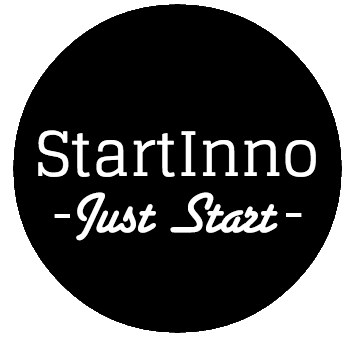This week we have a guest blogger, Paul McKey, a business mentor at the studio. Paul is an artist, author and management consultant. Below he has articulated his research and experience of innovation and how it is developed and utilised in organisations.
You can hear Paul speak at Startup Academy, July 3rd, about his new book Everyone is a Business - orchestrating innovation in your life, career and business.
I have read a few definitions of innovation in my time. Most of them either make my eyes water or want to run away. Going to the moon is innovation. Waking up is innovation. Saying ‘how can I help you?’ rather than ‘yeah whaddya want moosehead?’ is innovation. See it’s easy isn’t it? It can be big or small but it has to matter. And still we seek better definitions rather than just doing it. Here’s one for you:
Innovation is: production or adoption, assimilation, and exploitation of a value-added novelty in economic and social spheres; renewal and enlargement of products, services, and markets; development of new methods of production; and establishment of new management systems. It is both a process and an outcome. (Crossan and Apaydin 2010)
While I can fathom this definition I just can’t digest it nor do anything with it. That is possibly why we and our organisations have so much trouble turning our desire to innovate into action. So here is my version. Yet this definition is based on what I want to do to make innovation happen rather than defining what it is. A call to action rather than a static label.
Innovation is the creative implementation of learning and change.
Let me start from the end and explain the importance of these terms and why they are all you need.
Change – no change = no innovation. Yet this is the bit we usually resist most. Change can chase us or we can chase change. But when we catch it we often just let it go because it’s too hard. And this is where we need to pour the most effort into any innovation. When individuals, companies even societies can change easily and without fear innovation will happen. Your product will be accepted, your process followed and your laws obeyed. Get this step wrong and you will have a battle on your hands. But it requires learning to precede it. So I use a continual mantra of educate – motivate – activate to improve the likelihood of change succeeding.
Learning – change is learning, learning is change. Just by thinking differently we can innovate. Fresh thought fuelled by learning opens new doors and begins new journeys. Staring at the same problem or repeating the same process without experimentation and consciouslearning was defined by Einstein as madness. Educate yourself and your audience using words, images or action to demonstrate the worth of an innovation. Motivate people by interpreting and integrating your ideas into their worlds. Activate them by providing the means and removing the barriers to change. Companies that find innovation easy tend have a culture of learning so that past successes and failures are reflected upon and sewn into the fabric of the future.
Implementation – this is my favourite. Implementation is the hungry chasm that swallows everything from ideas, people, projects, best intentions, whole organisations and major government programs. Few make it to the other side without careful analysis of the risks and clear strategies for circumventing them. We often believe the strength of a great idea will carry it through, and in some rare cases it does, but one false step is usually enough to bring weak ideas down. Lack of resources, resistance to change, market blindness, wrong design, bad timing and poor communication are all waiting to trip you up. Later we’ll learn more about what underpins consistent and quality implementation – dynamic capabilities.
Creative – the cake itself, not just the icing. There is nothing sadder to see than a bunch of creative types sitting around waiting for creativity to appear because their manager has ordered it. Ensuring that the change, learning and implementation are done well is a necessity. Yet for disruptive and breakthrough innovation creativity has to be applied through every phase. That’s why it is the defining adverb in my definition and not just a lazy nondescript noun. A creative action will out perform a creative idea anytime.
The traditional wisdom is that innovation starts with creativity. I dispute that and quote Pasteur with his statement that chance favours the prepared mind. Learning and change may well proceed the intuiting of a new or different approach to a problem. Invention or discovery may languish until a creative use becomes apparent. Creativity takes many forms and may be nothing more than observing that a change has occurred or in some cases waiting until it has. And as for the belief of some people that they are not creative well… Crows are creative, dogs are creative and goats are ingenious so I am pretty sure most of you are too.
For more articles go to paulmckey.com.

